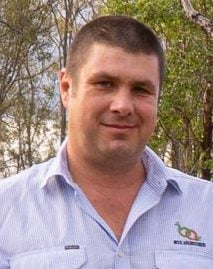 Interest rates may have stayed on hold for the second straight month, but leading agribusiness advisors say there's no time to wait for a financial review and reset.
Interest rates may have stayed on hold for the second straight month, but leading agribusiness advisors say there's no time to wait for a financial review and reset.
Following the Reserve Bank of Australia's statement on Tuesday, expectations are increasingly pointing to the 4.1% cash rate being the interest rate peak, or that there is one small rise to come.
Phil Alchin, leader of agri-services at Boyce , advises that with well-priced fixed-rate loans maturing and commodity prices well off from the highs, it’s time to consolidate.

"It is really time to be focused on cash flow budgeting. Not just one, but two years forward," Mr Alchin said.
"You want to forecast interest and debt repayments, and conduct a sensitivity analysis around income at different livestock and commodity prices."
The most recent figures, released by ABARES, showed that farm debt across the country rose to $110 billion in 2021-2022.
However, that figure is as of June 2022, so the true picture in terms of the debt size won't be known for another year.
What the data did reveal is that the average farm debt payment was a highly-manageable 8% of income across the 2021-2022 year.
Farms soared in value over the period, with the national average price per hectare almost doubling from $2435 in 2020 to an estimated $4689.
The good news is that in 2021-2022, 40% of farms were reducing their debt, while 37% had no debt at all, according to the ABARES report on farm debt.
23% of farms did increase debt over the survey period, and banks have been seeing farmers take on short-term debt to tide them over as they hold out for an increase in livestock prices.
But with 12 interest rate rises since May last year, experts are suggesting it is time to sit down with your accountant and your bank, if you haven't already done so.
Ian McLean of Toowoomba-based Bush Agribusiness warns that the powerful lever of debt, which can compound returns, also swings the other way.
 "I liken it to fire," Mr McLean said. "It's a good servant, but a poor master.
"I liken it to fire," Mr McLean said. "It's a good servant, but a poor master.
"In the face of changing circumstances, businesses should look at both their equity position and their serviceability, but have a focus on serviceability."
Mr McLean recommends businesses look at their interest coverage, and suggests a good rule is to ensure they have at least twice the earnings of the interest bill.
"If they can't maintain a reasonable interest coverage of at least two times at current cattle prices and interest rates, then they may need to consider whether their debt position is sustainable, regardless of their equity position," he said.
For those facing a higher debt load, Mr Alchin said it is important to have conversations with your bank and accountant sooner rather than later.
"Look at your strategy on your overall debt structure and interest rate structure. It's about having a long-term strategy in terms of fixed and floating debt, and consistent debt reduction. And sticking to the discipline around that," Mr Alchin said.
"Have discussions now with your bank; they should really be a key partner in this."
Mr Alchin expects the clients who will do well this year are irrigators in the cropping space.
Those in livestock have already seen a decrease in prices, while the drier weather in some areas will make things tougher for those engaged in dryland farming.
He recommends that alongside a sensitivity analysis for pricing, producers should also put some thought into how water availability and lower than average rainfall will affect production levels.
Property prices to track sideways but corporate ag likely to remain in the market
Ben Waters, who advises both corporate investors and large family firms at FTI Consulting, said the rate rises will likely put a pause on the rapid growth in property values.
"We certainly think the growth rates that have occurred in the last couple of years are unsustainable moving forward, and they will likely track sideways for the next little while," Mr Waters said.
His view is that the rapid expansion undertaken by family farmers is likely to slow as they will be constrained by, and need to consider, debt serviceability.
"We've certainly seen a different level of appetite in recent months. The number of people participating in sales has dropped a little bit, but there are still a number of interested parties there," he said.
people participating in sales has dropped a little bit, but there are still a number of interested parties there," he said.
It should present an opportunity for corporate ag to move into the space, as they often better access to capital.
"I think what we'll see is a return of the corporates because the market has settled at a level of pricing where the opportunities become more economically attractive."
Opportunities still out there
For those with dry powder, Mr Waters said deals will start to present themselves, but farmers need to ensure they make good commercial sense.
He forecasts higher interest rates will lead to 'natural selection', pushing competition out of the market at the same time as some families will look to offload properties to reduce debt exposure, amid the perennial succession sales, and corporate asset recycling.
But just because the opportunity is there, Mr Waters warned, doesn't mean you have to go for it.
"It needs to be made on good commercial grounds, needs to have a purpose, and the purchase needs to be value accretive to the overall enterprise. Most importantly, it needs to be affordable," he said.
 Results
Results
